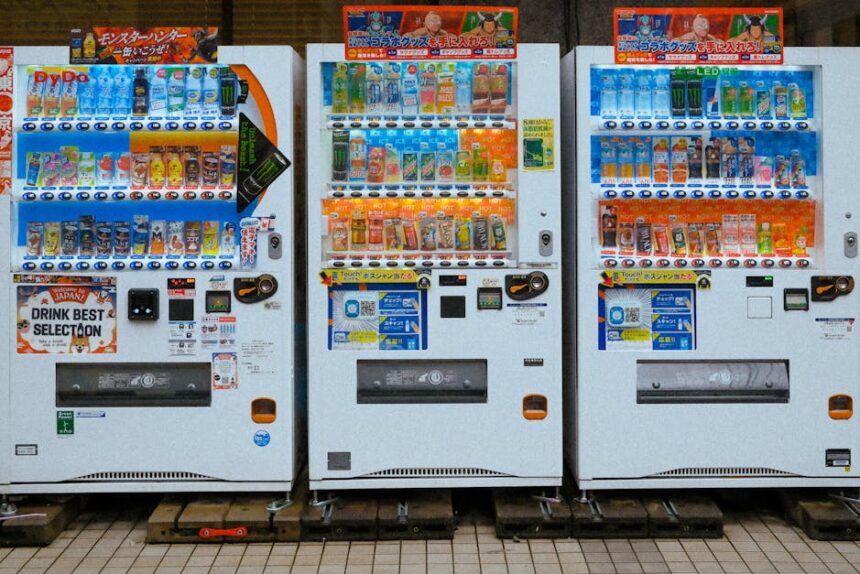Programmatic Digital Out-of-Home (pDOOH) represents a transformative evolution in the advertising landscape, moving beyond the traditional static billboard or even the manually managed digital screen. It leverages the power of real-time bidding, data analytics, and automation to deliver highly targeted, flexible, and measurable advertising campaigns on digital screens in public spaces. This paradigm shift makes outdoor media as agile and data-driven as its online and mobile counterparts, opening up unprecedented opportunities for advertisers and media owners alike. The core principle of pDOOH lies in the automated buying and selling of ad impressions on digital screens, using software and data to determine the most relevant ad, at the optimal time, for the most receptive audience, based on specific campaign parameters. This automation allows for dynamic campaign adjustments, contextual targeting, and enhanced measurement capabilities, fundamentally redefining the strategic value of out-of-home (OOH) media.
The Foundational Shift: From Traditional OOH to Programmatic DOOH
To truly grasp the significance of programmatic DOOH, it is essential to understand its lineage. Traditional out-of-home advertising, for centuries, was characterized by static, long-term placements on billboards, transit shelters, and other fixed structures. Campaigns were often booked months in advance, involved significant manual effort for printing and installation, and offered limited flexibility for real-time adjustments or detailed audience targeting beyond broad geographic areas. Measurement relied heavily on traffic counts and demographic estimates of the surrounding population.
The first significant evolution came with Digital Out-of-Home (DOOH). This introduced screens capable of displaying dynamic content, allowing multiple advertisers to share a single screen and enabling quicker content updates. However, the buying and selling of these digital ad slots often remained largely manual, resembling traditional media buying processes. Advertisers would negotiate directly with media owners, agreeing on fixed schedules or rotation slots. While more flexible than static OOH, DOOH still lacked the granular control, data-driven insights, and real-time responsiveness that digital advertising channels were increasingly offering.
Programmatic DOOH bridges this gap. It integrates OOH inventory into the broader ad tech ecosystem, enabling transactions to occur through automated platforms. This means media buyers can leverage demand-side platforms (DSPs) to purchase DOOH impressions, just as they would for display, video, or mobile ads. The inventory itself is managed by supply-side platforms (SSPs) on behalf of media owners, and transactions are often facilitated through ad exchanges. This shift injects unprecedented levels of efficiency, precision, and measurability into OOH, transforming it from a static, awareness-focused channel into a dynamic, performance-oriented one capable of driving tangible business outcomes. It means that an advertiser can, for example, bid on impressions only when specific conditions are met – like a certain temperature, a particular time of day, or when a specific audience segment is likely to be present in front of a screen. This level of contextual relevance and data-driven decision-making elevates OOH to a strategic imperative in modern media planning.
The Programmatic DOOH Ecosystem: A Network of Interconnected Technologies
The pDOOH ecosystem is a complex, interconnected web of technological platforms and stakeholders, each playing a crucial role in the automated buying and selling of digital out-of-home ad space. Understanding these components is key to comprehending how pDOOH campaigns are executed.
At the heart of this ecosystem are the Demand-Side Platforms (DSPs). These are software platforms used by advertisers and agencies to manage and automate the buying of ad impressions across various ad exchanges. For pDOOH, DSPs provide the interface where media buyers can define their campaign objectives, target audiences, set budgets, select geographic locations, and specify contextual triggers. They connect to multiple SSPs and ad exchanges, offering a consolidated view of available DOOH inventory and enabling real-time bidding for ad slots. Leading DSPs have integrated DOOH capabilities, allowing advertisers to run omnichannel campaigns from a single dashboard.
On the other side of the transaction are the Supply-Side Platforms (SSPs). SSPs are used by media owners (those who own and operate the digital screens) to manage, price, and sell their DOOH inventory programmatically. They connect to various DSPs and ad exchanges, making their ad slots available for bidding. SSPs help media owners optimize their yield by dynamically pricing impressions based on demand, audience data, and other factors. They ensure that the right ad is served to the right screen at the right time, maximizing revenue while maintaining control over their inventory.
Ad Exchanges act as marketplaces where SSPs and DSPs connect to facilitate the programmatic buying and selling of ad impressions. They host the real-time bidding (RTB) auctions, matching advertisers’ bids with available inventory. These exchanges operate at lightning speed, processing millions of bid requests per second to ensure ads are delivered almost instantaneously. While some exchanges specialize solely in DOOH, others are broader, integrating DOOH into a larger pool of digital inventory.
Data Management Platforms (DMPs) are critical for injecting intelligence into pDOOH campaigns. DMPs collect, organize, and activate audience data from various sources (first-party, second-party, and third-party) to create detailed audience segments. In the context of pDOOH, DMPs provide insights into audience demographics, behaviors, interests, and movement patterns around DOOH screens. This data is then used by DSPs to refine targeting and optimize campaign performance, ensuring ads are shown to the most relevant viewers.
Out-of-Home Media Owners are the fundamental providers of the ad space. They own and operate the networks of digital screens in public spaces – from billboards and street furniture to screens in malls, airports, and transit systems. For pDOOH, media owners integrate their screens with SSPs, making their inventory programmatically accessible. This shift allows them to monetize their assets more efficiently, attract a broader range of advertisers, and potentially increase their fill rates and overall revenue.
Finally, Advertisers and Agencies are the ultimate consumers of pDOOH services. They leverage these platforms to execute their marketing strategies, reach their target audiences, and achieve their campaign objectives, whether it’s brand awareness, driving foot traffic, or influencing purchase decisions. Agencies often act as intermediaries, using their expertise to navigate the complex ecosystem and optimize campaigns on behalf of their clients.
Beyond these core players, the ecosystem also involves Data Providers who offer specialized datasets (e.g., footfall data, weather data, traffic data), Verification and Measurement Companies that provide third-party validation and attribution services, and Creative Management Platforms that enable dynamic creative optimization based on real-time data inputs. The seamless interaction between these components, facilitated by sophisticated APIs and high-speed data transfer, forms the backbone of a functioning programmatic DOOH campaign.
How Programmatic DOOH Campaigns Work: The Mechanics of Real-Time Delivery
The operational mechanics of a programmatic DOOH campaign are remarkably similar to other forms of programmatic advertising, albeit adapted for the unique context of public screens. The process is initiated when a specific ad slot on a DOOH screen becomes available, triggering a series of automated, high-speed transactions.
-
Impression Opportunity & Bid Request: When a digital screen is about to display a new ad (e.g., at the end of a previous ad’s run, or based on a pre-set schedule), the media owner’s ad server sends an impression opportunity signal to its connected SSP. The SSP gathers contextual information about this impression: the screen’s location, time of day, screen size, available ad slots, and potentially anonymous audience data collected via sensors or third-party feeds (e.g., estimated foot traffic, demographic profile of the area). This information is then formatted into a “bid request.”
-
Bid Request Distribution: The SSP sends this bid request to various connected ad exchanges and DSPs. The bid request contains all the relevant parameters that advertisers might use to decide if they want to bid on this specific impression.
-
DSP Evaluation and Bid: DSPs receive numerous bid requests simultaneously. Their role is to evaluate each request against the active campaigns they are managing for advertisers. The DSP analyzes the bid request’s parameters (location, time, audience data, context) and compares them against the targeting criteria set by the advertiser (e.g., “show my coffee ad when the temperature is below 10°C in downtown area,” or “show my car ad when there’s heavy traffic on this specific highway”). If the impression matches a campaign’s targeting criteria, the DSP calculates a bid amount based on the advertiser’s budget, bid strategy, and campaign goals. The goal is to bid just enough to win the impression without overspending.
-
Real-Time Auction: All eligible DSPs submit their bids back to the ad exchange. The ad exchange then conducts a real-time auction (often a second-price auction, where the winner pays one increment more than the second-highest bid). The highest bidder wins the impression.
-
Ad Creative Delivery: Once a winner is determined, the ad exchange notifies the winning DSP and the SSP. The SSP then instructs the media owner’s ad server to pull the winning advertiser’s creative from the DSP or a linked creative management platform. This creative is then delivered to the specific digital screen and displayed almost instantaneously. The entire process, from impression opportunity to ad display, typically happens within milliseconds.
Contextual Triggers and Dynamic Creative Optimization (DCO): A key differentiator for pDOOH is its ability to react to real-world conditions. Advertisers can set up campaigns to trigger ads based on various external data inputs:
- Weather: Displaying ads for umbrellas when it rains, or ice cream when it’s hot.
- Time of Day/Week: Promoting breakfast items in the morning, happy hour deals in the evening.
- Traffic Conditions: Showing ads for car repair services during heavy congestion, or transit alternatives.
- Public Events: Highlighting nearby concert information or sports scores.
- POI Data: Targeting screens near competitors’ locations or specific points of interest.
- Audience Presence: Adapting content based on the estimated demographic or mood of the passing audience (anonymized, privacy-compliant).
Furthermore, Dynamic Creative Optimization (DCO) allows ad content to be automatically tailored based on these triggers and audience data. Instead of a single static ad, a campaign can have multiple creative variations, with the system intelligently selecting the most relevant version in real-time. This ensures maximum relevance and impact for each impression.
Advantages for Advertisers: Unlocking New Levels of Impact
Programmatic DOOH offers a compelling suite of advantages that address long-standing limitations of traditional OOH and elevate its strategic value in the modern media mix.
-
Precision Targeting: Unlike traditional OOH that relies on broad geographic assumptions, pDOOH enables highly granular audience targeting. Advertisers can define specific audience segments based on demographics, interests, behaviors (e.g., frequent visitors to certain POIs), and even psychographics derived from anonymized data sets. This means an ad for luxury watches can be shown specifically when high-net-worth individuals are likely to be in the vicinity of a screen, rather than just anyone. Geotargeting can be pinpointed to specific neighborhoods, streets, or even within a few meters of a competitor’s location.
-
Flexibility and Agility: The real-time nature of programmatic buying introduces unprecedented flexibility. Campaigns can be launched, paused, optimized, and adjusted rapidly, often within minutes. This contrasts sharply with the long lead times and fixed commitments of traditional OOH. Advertisers can react to current events, competitor moves, or changing market conditions almost instantly. For example, a restaurant chain could launch a flash promotion for a rainy day lunch special, activate it across screens in relevant areas, and pull it down once the weather clears or the promotion ends. This agility significantly reduces wasted ad spend and maximizes responsiveness.
-
Efficiency and Automation: Programmatic buying streamlines the entire media buying process. It automates negotiations, bidding, and ad serving, reducing the manual effort, time, and human error associated with traditional direct buys. This efficiency translates into cost savings and allows media buyers to focus on strategic planning and optimization rather than repetitive administrative tasks. Campaigns can be managed at scale, reaching thousands of screens simultaneously with granular control.
-
Enhanced Measurement and Attribution: This is one of the most transformative benefits. While traditional OOH measurement was limited, pDOOH leverages data to provide more robust insights into campaign performance. Advertisers can track metrics like estimated impressions, reach, and frequency with greater accuracy. More importantly, it enables attribution modeling that links DOOH exposure to offline and online actions. This can include footfall attribution (measuring increases in store visits after exposure), mobile device ID matching (connecting screen exposure to subsequent online behavior on mobile), and integration with sales data to understand ROI. This data-driven approach allows for continuous optimization and clearer justification of OOH spend.
-
Omnichannel Integration and Synergy: pDOOH is not an isolated channel; it’s designed to integrate seamlessly into broader omnichannel strategies. Advertisers can create synchronized campaigns that deliver a consistent message across OOH, mobile, social media, online display, and connected TV (CTV). For example, a user exposed to an ad on a DOOH screen might then be retargeted with a complementary ad on their mobile device when they enter a specific geo-fenced area. This cross-channel synergy amplifies campaign impact, drives greater brand recall, and guides consumers through the marketing funnel more effectively, from brand awareness (pDOOH) to consideration (mobile/social) to conversion (online or in-store).
-
Dynamic Content and Contextual Relevance: The ability to serve dynamic creative based on real-time data inputs is a game-changer. An ad for a car dealership could show different models based on local weather conditions (e.g., SUVs in snow, convertibles in sun) or display real-time inventory levels. A travel agency could show different vacation packages based on the time of day and local events. This contextual relevance significantly increases ad engagement and memorability, making the message far more impactful than a static billboard.
-
Cost-Effectiveness and Optimized Spend: By allowing advertisers to bid on impressions rather than buying fixed, long-term placements, pDOOH enables more precise budget allocation. Advertisers only pay for impressions delivered to their target audience under desired conditions, reducing wasted spend. The ability to optimize campaigns in real-time based on performance data ensures that media budgets are continuously shifted towards the most effective placements and strategies, maximizing return on investment (ROI).
Advantages for Media Owners: Maximizing Inventory Value and Revenue
Programmatic DOOH also brings substantial benefits to media owners, transforming how they manage, monetize, and optimize their valuable digital screen inventory.
-
Monetization and Yield Optimization: Perhaps the most significant advantage for media owners is the ability to maximize the revenue generated from their digital screens. SSPs and ad exchanges allow them to expose their inventory to a vast pool of demand from multiple advertisers simultaneously, leading to competitive bidding. This dynamic pricing mechanism ensures that ad slots are sold at the best possible price based on real-time market demand, location, time, and audience value. It allows media owners to sell impressions that might otherwise have gone unsold (e.g., during off-peak hours), effectively increasing their fill rates and overall yield.
-
New Revenue Streams and Advertiser Access: Programmatic access democratizes DOOH, attracting a broader range of advertisers, including small and medium-sized businesses (SMBs) and digital-first brands, who might not have traditionally engaged with OOH due to perceived high costs, lack of flexibility, or complex buying processes. By integrating into the programmatic ecosystem, media owners can tap into programmatic budgets that were previously allocated solely to online or mobile channels, opening up entirely new revenue streams and expanding their client base beyond traditional OOH buyers.
-
Streamlined Operations and Reduced Friction: Automating the buying and selling process significantly reduces the manual effort involved in managing ad sales. SSPs handle inventory management, ad slot allocation, billing, and reporting, freeing up sales teams to focus on strategic client relationships and higher-value deals. This reduction in operational overhead translates into greater efficiency and potentially lower costs for media owners.
-
Granular Data Insights: SSPs provide media owners with valuable data insights into their inventory performance, audience behavior, and demand trends. They can see which screens perform best, at what times, for which audience segments, and what types of campaigns attract the highest bids. This data helps them optimize pricing strategies, improve network planning, identify underperforming assets, and develop more compelling value propositions for advertisers. Understanding audience footfall patterns, dwell times, and demographic composition around their screens allows them to better package and sell their inventory.
-
Enhanced Content Management and Flexibility: While not exclusively programmatic, the underlying DOOH technology, often managed via the SSP, allows for sophisticated content scheduling and management. Media owners can easily manage diverse creative formats, ensure brand safety, and prioritize certain campaigns if needed. The automation means less manual uploading and scheduling, particularly for campaigns that involve dynamic content triggered by external data feeds.
-
Future-Proofing and Industry Alignment: By embracing programmatic, media owners align themselves with the broader trends in the advertising industry. This positions them favorably for future innovations, integrations with emerging technologies (like AI/ML for predictive analytics), and greater participation in omnichannel media plans, ensuring their long-term relevance and competitiveness in a rapidly evolving market.
Challenges and Solutions in Programmatic DOOH: Navigating the Frontier
While the advantages of programmatic DOOH are compelling, its rapid growth and unique characteristics also present a set of challenges that the industry is actively working to address.
-
Data Privacy and Anonymization: OOH operates in public spaces, and the collection of audience data (e.g., footfall, mobile device IDs) raises privacy concerns.
- Solution: Strict adherence to global privacy regulations like GDPR and CCPA is paramount. Data collected must be aggregated, anonymized, and pseudonymized, focusing on audience segments rather than individual identification. The industry uses techniques like privacy-preserving analytics, on-device processing, and synthetic data to derive insights without compromising personal privacy. Transparency about data collection practices is also crucial.
-
Standardization Across a Fragmented Landscape: The DOOH landscape is highly fragmented, with diverse screen types, sizes, technical specifications, and media owner systems. This lack of universal standardization can complicate the programmatic buying process.
- Solution: Industry bodies like IAB Tech Lab are developing and promoting standards such as OpenRTB for OOH and OpenPMP for OOH. These specifications aim to create a common language for bid requests, ad delivery, and reporting, enabling seamless communication between different platforms (DSPs, SSPs, ad servers). Greater collaboration among media owners to adopt these standards will accelerate interoperability.
-
Measurement and Attribution Complexity: Unlike online advertising with direct clicks and conversions, measuring the direct impact of OOH exposure on immediate action is challenging. While pDOOH improves measurement, robust, widely accepted attribution models are still evolving.
- Solution: The industry is leveraging sophisticated methodologies like geo-fencing (attributing store visits to users exposed to ads in a specific area), mobile device ID matching (anonymously linking screen exposure to mobile ad IDs for online retargeting or behavior analysis), brand lift studies, and correlation with sales data. Unified measurement frameworks that integrate OOH data with other media channels are also being developed to provide a holistic view of campaign performance.
-
Inventory Fragmentation and Onboarding: While the number of DOOH screens is growing, onboarding them onto programmatic platforms can be complex due to varying technical setups, ownership structures, and data capabilities.
- Solution: SSPs are continually improving their integration capabilities and working closely with media owners to streamline the onboarding process. Aggregators and networks that consolidate inventory from multiple smaller media owners also help present a more unified supply to buyers. Continued investment in standardized APIs and system integrations is vital.
-
Ad Fraud (Emerging Concern): While less prevalent than in online advertising due to the physical nature of screens, the potential for ad fraud (e.g., misrepresenting screen locations, fake impressions) is an emerging concern as pDOOH scales.
- Solution: Implementing robust verification mechanisms is crucial. This includes GPS coordinates and timestamps embedded in bid requests, third-party verification tools, image recognition on screens, and blockchain-based solutions for enhanced transparency and immutability of transaction logs. Media owners must maintain high standards of inventory integrity.
-
Creative Development for Dynamic Context: Developing dynamic creative that effectively leverages real-time triggers and resonates with audiences in a public space can be complex and requires specialized skills.
- Solution: Creative management platforms (CMPs) and DCO (Dynamic Creative Optimization) tools are evolving to simplify the creation and management of responsive ad content. Agencies and creative teams need to embrace a data-driven approach to creative, understanding how different elements (colors, copy, calls to action) perform under various contextual conditions. Pre-testing and A/B testing different creative variations can provide valuable insights.
-
Educating the Market: Many advertisers and agencies, particularly those accustomed to traditional OOH buying, need to be educated on the capabilities and benefits of programmatic DOOH, including its measurement possibilities and omnichannel integration.
- Solution: Industry associations, DSPs, SSPs, and media owners must collaborate on educational initiatives, workshops, case studies, and thought leadership content to raise awareness and demonstrate the tangible ROI of pDOOH. Showcasing successful campaigns is key to building confidence and driving adoption.
Addressing these challenges requires ongoing collaboration, technological innovation, and a commitment to industry standards and best practices. As solutions mature, pDOOH will continue to solidify its position as a mainstream advertising channel.
Measurement and Attribution: Quantifying the Impact of OOH
One of the historical weaknesses of Out-of-Home (OOH) advertising has been the perceived difficulty in precisely measuring its impact and attributing conversions directly, unlike digital channels with their click-through rates and immediate conversion tracking. Programmatic DOOH is fundamentally changing this by injecting data and advanced analytics into the measurement framework. While a direct “click” on a physical screen isn’t possible, pDOOH leverages a variety of methodologies to provide increasingly sophisticated insights into campaign performance and ROI.
Key Metrics in pDOOH Measurement:
- Impressions: The estimated number of times an ad is viewed. For pDOOH, this is often calculated based on traffic flow, visibility (e.g., roadside screens), and screen location, sometimes enhanced by camera analytics or sensor data. Impressions are dynamic and can be tied to specific conditions or audience types.
- Reach: The estimated number of unique individuals exposed to an ad.
- Frequency: The average number of times a unique individual is exposed to an ad.
- Dwell Time: The estimated duration for which an audience is in view of a screen. This is particularly relevant for screens in transit hubs, waiting areas, or retail environments.
- Footfall/Traffic Analysis: Measuring the number of people entering a specific geofenced area (e.g., a retail store) after being exposed to a DOOH ad in a nearby location. This is a crucial metric for retail and location-based businesses.
- Brand Lift: Measuring changes in brand awareness, recall, perception, or purchase intent through pre/post-campaign surveys among exposed and control groups.
- Offline Sales/Conversions: Correlating DOOH ad exposure with an increase in sales at a physical retail location or specific service uptake.
Attribution Methodologies:
- Geo-Fencing and Location Data: This is perhaps the most widely used and effective method. Advertisers can create virtual boundaries (geo-fences) around DOOH screens and around their points of interest (stores, dealerships, event venues). By anonymously tracking mobile device IDs that enter these geo-fenced areas (with user consent and privacy compliance), it’s possible to identify individuals exposed to the DOOH ad who then subsequently visited the advertiser’s physical location. This provides a direct measure of footfall attribution.
- Mobile Device ID Matching (Privacy-Compliant): Anonymous mobile device IDs collected from various data sources (e.g., mobile apps, Wi-Fi networks in public spaces, telco data – all aggregated and anonymized) can be matched against the geographical and temporal context of DOOH ad exposure. This allows for cross-channel insights, such as retargeting users on their mobile devices after DOOH exposure or understanding their subsequent online browsing behavior.
- Surveys and Panel Data: Traditional survey methods can still be employed, particularly for brand lift studies. Exposing a test group to DOOH ads and comparing their responses to a control group can reveal the impact on brand metrics.
- Point-of-Sale (POS) Data Integration: For businesses with physical locations, integrating sales data with DOOH exposure data can help identify correlations between ad campaigns and sales spikes. This often involves looking at sales performance in areas with DOOH campaigns versus control areas.
- QR Codes and Unique URLs/Promos: While not strictly programmatic, including scannable QR codes or unique URLs/discount codes in DOOH creatives provides a direct, trackable call-to-action that can be measured.
- Camera Analytics (Privacy-First): Advanced DOOH screens equipped with anonymized camera sensors can detect audience presence, dwell time, demographics (e.g., age range, gender distribution without identifying individuals), and even emotional responses (without storing personal data). This data feeds into impression calculations and can help optimize creative for specific audience reactions.
Overcoming Measurement Challenges:
The key to robust pDOOH measurement lies in data unification and multi-touch attribution. Instead of isolating DOOH, its performance should be viewed within the context of the entire media mix. Attribution models that consider the full customer journey, assigning credit to various touchpoints (including OOH) are becoming more sophisticated. The industry is moving towards unified measurement platforms that integrate data from DOOH DSPs, SSPs, and third-party data providers with other digital channels, providing advertisers with a holistic view of their marketing effectiveness. As the technology evolves, the lines between online and offline attribution will continue to blur, making pDOOH an increasingly accountable and indispensable part of the advertising ecosystem.
The Omnichannel Imperative: Integrating pDOOH into the Wider Ad Tech Ecosystem
In today’s fragmented media landscape, consumers interact with brands across numerous touchpoints – mobile, desktop, social media, connected TV, and physical out-of-home environments. For advertising to be effective, it must deliver consistent, complementary messages that guide the consumer seamlessly through their journey. This is the essence of the omnichannel imperative, and programmatic DOOH is increasingly recognized as a crucial piece of this puzzle.
Historically, OOH was often planned in isolation, viewed primarily as a mass-reach, brand-awareness channel. Its integration into the broader digital ecosystem was limited. However, pDOOH, with its data-driven targeting and measurement capabilities, fundamentally changes this. It allows OOH to be treated as another digital touchpoint, enabling true cross-channel synergy and a more holistic approach to media planning.
Key Aspects of Omnichannel Integration with pDOOH:
-
Unified Audience Segmentation: The same audience segments defined in a Data Management Platform (DMP) or Customer Data Platform (CDP) for online campaigns can now be applied to pDOOH campaigns. This means advertisers can target the same high-value customers with consistent messaging, whether they are browsing a website, scrolling social media, or walking past a digital billboard. This eliminates silos and ensures messaging relevance across all channels.
-
Cross-Screen Retargeting and Sequencing: This is one of the most powerful synergies.
- OOH-to-Mobile: An individual exposed to a DOOH ad for a specific product can then be retargeted with mobile ads for that same product when they enter a geo-fenced area or are detected as being within a certain proximity to the screen. This reinforces the message and provides a direct pathway to conversion (e.g., linking to an e-commerce site or app download).
- Mobile-to-OOH: Conversely, brands can identify high-intent consumers through their online behavior (e.g., browsing product pages on mobile) and then deliver highly targeted DOOH ads to them when they are likely to be in a relevant physical location (e.g., near a retail store selling that product).
- Sequential Storytelling: Campaigns can be designed to tell a story across different channels. A broad brand awareness message on a large format DOOH screen could be followed by a more detailed product message on mobile, culminating in a dynamic creative on another DOOH screen near a point of sale.
-
Full-Funnel Marketing Support: pDOOH can effectively contribute to every stage of the marketing funnel:
- Awareness: Its large formats and prominent locations make it excellent for building broad brand recognition and reach.
- Consideration: Targeted pDOOH messages, combined with mobile retargeting, can provide more detailed information and encourage consumers to learn more.
- Conversion: Geo-fencing and real-time triggers for promotions or inventory updates can drive foot traffic and immediate sales to physical locations.
-
Data Unification and Attribution Modeling: The ability to integrate DOOH exposure data with other digital campaign data (from DSPs, ad servers, analytics platforms) allows for more sophisticated multi-touch attribution models. Marketers can gain a clearer understanding of how OOH influences online conversions, app downloads, website visits, and physical store visits when combined with other channels. This unified view helps optimize overall media spend and maximize ROI across the entire marketing budget.
-
Consistent Brand Experience: By integrating pDOOH into omnichannel planning, brands can ensure a cohesive and consistent brand experience. The look, feel, and messaging of ads remain harmonious whether encountered online or offline, strengthening brand identity and recall.
The shift towards programmatic DOOH empowers advertisers to break down the traditional silos between online and offline media. It positions OOH not as a standalone channel, but as an integral, dynamic, and measurable component of a unified, data-driven marketing strategy, enabling a truly connected consumer journey.
Programmatic DOOH: The Next Frontier – Future Trends and Innovations
The evolution of programmatic DOOH is far from complete. As a “next frontier,” it is ripe for further innovation, driven by advancements in artificial intelligence, connectivity, and evolving consumer expectations. The future of pDOOH promises even greater precision, interactivity, and integration into the fabric of smart cities.
-
Artificial Intelligence (AI) and Machine Learning (ML) Dominance:
- Hyper-Personalization: AI will enable real-time analysis of anonymous audience data (e.g., through computer vision on screens) combined with external data (weather, traffic, events) to predict optimal ad content and delivery. This could mean highly personalized ads tailored to the estimated demographic, mood, or context of the passing audience, without compromising privacy.
- Predictive Analytics: AI will move beyond reactive optimization to predictive capabilities, forecasting audience presence, behavior, and campaign effectiveness before impressions are even served. This allows for more intelligent bidding strategies and proactive campaign adjustments.
- AI-Driven Creative Optimization: AI will not only select the best existing creative but could also dynamically generate or modify ad content (e.g., adjusting text, colors, images) in real-time based on performance data and contextual triggers, maximizing relevance and engagement.
-
Enhanced Interactivity and Engagement:
- QR Codes & NFC: While already in use, these will become more prevalent and sophisticated, seamlessly linking the physical screen to mobile experiences like augmented reality (AR) filters, interactive games, or direct purchase pathways.
- Gesture and Voice Control: Screens equipped with sensors could respond to viewer gestures or voice commands, allowing for interactive experiences similar to a large tablet.
- Augmented Reality (AR) Overlays: Viewers could hold up their phones to a DOOH screen and see AR overlays that bring the ad to life, provide more information, or offer interactive elements directly linked to the campaign.
- Programmatic Audio in OOH: While visual is primary, ambient or triggered audio messages delivered through discreet speakers could be programmatically activated in public spaces like bus shelters or retail environments, creating a multi-sensory experience.
-
Deeper Integration with Smart City Infrastructure and IoT:
- Real-time Urban Data: pDOOH screens will become integral nodes in smart city networks, leveraging real-time data from IoT sensors, traffic management systems, public transport feeds, and environmental monitoring. This data can inform ad triggers (e.g., promoting sustainable transport when air quality is poor) but also offer public service announcements or emergency alerts.
- Dynamic Information Hubs: Screens will serve dual purposes: advertising and providing useful civic information (e.g., real-time transit schedules, local event listings, public safety messages), making them more valuable to the community and increasing dwell time.
- Electric Vehicle (EV) Charging Stations: As EV infrastructure expands, charging stations equipped with DOOH screens will become prime programmatic inventory, targeting drivers with relevant ads during their charging sessions.
-
Emergence of New Screen Types and Formats:
- Beyond Billboards: Expansion into smaller, more contextual screens in elevators, smart vending machines, digital street furniture (benches, bins), and even potentially in-car displays (with privacy considerations).
- Programmatic Place-Based Media: Growth in screens within specific venues like gyms, doctors’ offices, universities, and corporate campuses, allowing for highly niche targeting.
- Transparent and Flexible Displays: Advances in display technology will enable screens to be integrated more seamlessly into architectural designs, windows, or even clothing, opening up novel ad placements.
-
Sustainability and Energy Efficiency:
- As DOOH networks expand, the environmental footprint becomes a consideration. Future innovations will focus on energy-efficient screen technologies, renewable energy sourcing for screens, and optimizing content delivery to reduce data transmission, aligning with global sustainability goals.
-
Blockchain for Transparency and Trust:
- While speculative, blockchain technology could be leveraged in pDOOH to create immutable records of ad impressions and transactions. This could enhance transparency, reduce the potential for fraud, and ensure fair compensation across the supply chain, building greater trust among advertisers and media owners.
-
Converged Programmatic Buying:
- The ultimate frontier is a truly converged programmatic platform where buyers can manage and optimize campaigns across all digital channels—DOOH, mobile, CTV, audio, display—from a single dashboard, with unified targeting, bidding, and attribution. This will allow for seamless, highly optimized cross-channel media buying.
The next frontier of programmatic DOOH is characterized by increasing intelligence, deeper integration into the physical world, and a commitment to creating more relevant, engaging, and measurable advertising experiences. As these innovations unfold, pDOOH will cement its position as a central pillar in the future of marketing.
Implementing Programmatic DOOH: Best Practices and Strategic Considerations
Successfully leveraging programmatic DOOH requires more than simply connecting to a DSP. It demands a strategic approach, careful planning, and continuous optimization to maximize ROI and achieve campaign objectives.
-
Define Clear Campaign Objectives: Before launching any pDOOH campaign, clearly articulate what you aim to achieve. Is it brand awareness, driving foot traffic to a retail location, promoting a new product, or influencing online behavior? Specific, measurable, achievable, relevant, and time-bound (SMART) objectives will guide your targeting, creative, and measurement strategies.
-
Leverage Data Effectively: Data is the fuel for programmatic.
- Audience Data: Utilize DMPs or CDPs to define precise audience segments. Go beyond basic demographics; consider lifestyle, behaviors, interests, and purchase intent derived from anonymized data.
- Contextual Data: Identify relevant triggers such as weather, time of day, local events, traffic conditions, or proximity to points of interest (POIs). The more relevant the context, the higher the ad’s impact.
- First-Party Data: If available and privacy-compliant, integrate your own customer data to build highly customized segments for retargeting or lookalike audiences.
-
Choose the Right Partners: The success of your pDOOH efforts heavily depends on the technology partners you select.
- DSP Selection: Look for a DSP with robust DOOH integration, strong targeting capabilities, intuitive reporting, and good customer support. Ensure it connects to the inventory sources (SSPs/Exchanges) most relevant to your target geographies and screen types.
- SSP/Media Owner Relations: For media owners, choosing an SSP that maximizes yield, offers flexible inventory management, and connects to a wide range of buyers is crucial.
- Data Providers: Vet data providers for accuracy, recency, privacy compliance, and relevance of their datasets to your campaign goals.
-
Develop Compelling Dynamic Creative: Static creative won’t cut it. Embrace dynamic creative optimization (DCO) to ensure your message is always relevant to the current context.
- Keep it Concise and Visual: DOOH audiences are often in motion. Messages should be instantly understandable, highly visual, and impactful in a few seconds.
- Design for Context: Develop multiple creative variants that can be automatically swapped based on triggers (e.g., different visuals for sunny vs. rainy weather, varying calls-to-action for morning vs. evening).
- Clear Call-to-Action (CTA): Even if not directly clickable, a clear, memorable CTA (e.g., website, QR code, store name) can prompt subsequent action.
-
Embrace Continuous Optimization and Testing: Programmatic DOOH allows for real-time adjustments.
- A/B Testing: Experiment with different creative variations, targeting parameters, and contextual triggers to see what performs best.
- Performance Monitoring: Regularly review campaign performance metrics (impressions, footfall, etc.) and make data-driven adjustments to bids, budgets, targeting, and creative.
- Learn from Data: Analyze post-campaign reports to understand what worked and what didn’t, informing future strategies.
-
Understand OOH’s Unique Strengths within the Media Mix: While pDOOH is data-driven, it retains the inherent strengths of OOH: mass reach, unavoidable impressions, and building brand trust through physical presence. Integrate pDOOH strategically to complement other channels, particularly mobile, for a powerful omnichannel effect. Don’t simply treat it as another digital display channel; leverage its unique ability to reach audiences in the real world.
-
Prioritize Regulatory Compliance and Brand Safety: Ensure all data practices are compliant with privacy regulations (GDPR, CCPA, etc.). For media owners, maintaining high standards of inventory quality and ensuring brand safety (e.g., preventing inappropriate ads on screens) is paramount. For advertisers, ensure your ads are contextually appropriate for public display.
By focusing on these best practices, both advertisers and media owners can unlock the full potential of programmatic DOOH, transforming it from a burgeoning frontier into a fully integrated, high-performing advertising channel.











